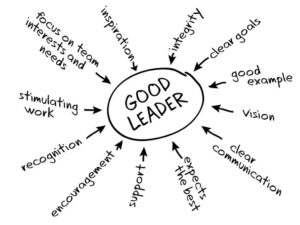
Things We Love
Coming Soon… We are currently cultivating “must read” books and other resources from some of our favorites to share with you. Please check back soon.

Coming Soon… We are currently cultivating “must read” books and other resources from some of our favorites to share with you. Please check back soon.

Blockchain is headed to HR and experts say the tamper-proof technology will improve payroll distribution and recruiting.

Surveys show that employees in wellness programs are 12 percent less likely to experience health issues caused by work-related stress.

Your collaboration spaces help to build your company’s culture. Here are 3 Cs you want to include when planning them.

Employee engagement is the key to client engagement. See how fostering a company culture of engaged workers can bring about success.

For companies focused on digital transformation, Human Resource teams play a critical role. Here’s how strategic HR leads to digital transformation success.

Employee referral programs can produce your top talent but only if they are done right. Make the most of yours by following these tips.

Chatbots are the way of the future. Here’s how they will impact HR.

Artificial Intelligence is transforming HR and talent acquisition. Here are just four examples of how it will benefit your hiring process.

AI’s introduction into the workforce brings about a new type of diversity. Here are 4 ways to prepare for the changes it will create.

Annual performance reviews can be stressful and time consuming. That’s why you should consider quarterly objectives and key results instead.

On #WorkTrends this week, we discussed the ways people can reignite their passions and fulfill their highest aspirations.

Change is hard especially in the digital transformation. Here are a few ways leaders can help their employees adapt to the changes.

Smart leaders know a lot is gained by creating safe opportunities for important conversations on sensitive subjects. Here’s how to do it right.

New state and local laws addressing pay equity make salary disclosure illegal. Does your company know how to navigate these new policies?

Developing a good relationship with your software vendor protects your investment and ensures you get the most value and service with your purchase.

Join #WorkTrends this week to discuss the ways people can reignite their passions and fulfill their highest aspirations with guest Paul Cummings.

What is the role of curiosity in the workforce? Let’s explore how it leads to greater collaboration and higher level thinking among coworkers.

The right partnership is key for successful performance management. Here are some expectations you should set for consultants you work with.

HR automation shouldn’t replace employees. It should increase productivity. These three routes can lead to that perfect balance of automation.

Organizations can be more productive and collaborative when they adopt a servant leadership philosophy. On #WorkTrends this week, we discussed the ways companies can implement servant leadership.

When employees feel their work environment is psychologically safe, the company actually benefits. See how to create a safe space for your team.

Creative thinkers bring many benefits to the workplace but how do you know if you are hiring the right one? Here are 5 tips for success.

Sales is a rapidly changing profession. With advancements like AI and automation gaining momentum, can salespeople adapt and thrive? Yes—here’s how.

To survive and thrive in today’s unpredictable markets, successful leaders must treat contingency planning as a priority.